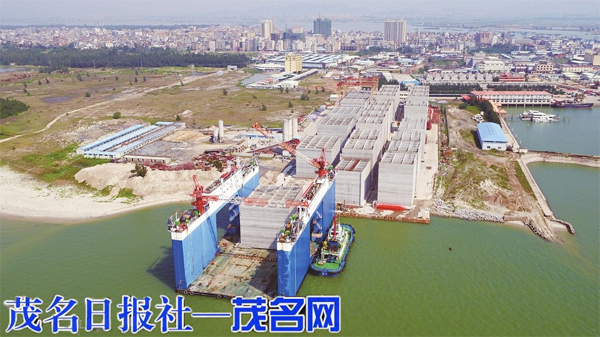Public wharf of Bohe New Harbor to be put into operation
- (chinadaily.com.cn)
- Updated: 2020-08-13
The first phase of the general wharf at the Bohe New Harbor of Maoming Port, which was constructed by CCCC Fourth Harbor Engineering Co Ltd, passed the completion acceptance on July 28, marking that the first deep water public wharf in Maoming has entered the operational stage.
The wharf is an important node to connect the 21st Century Maritime Silk Road, and plays a key role in promoting the development of related industries like the port industry and the port logistics industry in Maoming.
The general wharf project includes construction of two new 100,000-ton berths, one 70,000-ton berth, one 35,000-ton berth, and one berth for working ships, with an annual designed throughput capacity of 10.1 million tons.
The first-phase construction of the wharf covers the 70,000-ton and 35,000-ton berths, rear supporting storage yards, as well as auxiliary production facilities.

The construction site of the first phase of the general wharf at the Bohe New Harbor of Maoming Port. [Photo by Yu Kaiqiao/Maoming Daily]
To accelerate project construction, the integrated template installation technology of the cast-in-place retaining walls was developed by the enterprise, which reduces the impact of the tide and shortens the construction time from the traditional 3.5 days to one day.
It has helped the first phase of the general wharf project reduce costs by about 900,000 yuan ($129,551.53) and shorten the construction time by nearly three months.
In addition, the technology has obtained the 2020 national utility model patent, and was included in the digital resource database of the All-China Federation of Trade Unions.
To ensure the smooth advancement of the project, the project department of CCCC Fourth Harbor Engineering Co Ltd has also taken several measures to counter the outbreak of the novel coronavirus (COVID-19) pandemic. Chartered buses were arranged for workers, along with daily disinfection and temperature measurement. By the end of March, the resumption rate of workers exceeded 95 percent.


